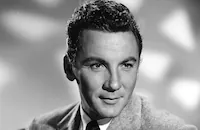Blood and Black Lace

Brief Synopsis
Cast & Crew
Mario Bava
Eva Bartok
Cameron Mitchell
Thomas Reiner
Arianna Gorini
Mary Arden
Film Details
Technical Specs

Synopsis
Cristina and her lover Max Martan own a luxurious fashion salon which is a coverup for illegal activities such as traffic in drugs. Isabella, a model, is strangled, and when Nicole, her roommate, finds her diary, she too is murdered by a masked killer. Next, Peggy is tortured and killed; and after Peggy's death, another woman is murdered. It is divulged that Martan was responsible for the murder of the four women, and he convinces Cristina to murder a fifth, Tao-li, as she attempts to escape. Coveting Cristina's wealth, Martan then arranges for her to fall from a balcony, but before dying, Cristina manages to telephone the police and shoot Martan.

Director
Mario Bava
Cast

Eva Bartok

Cameron Mitchell
Thomas Reiner
Arianna Gorini
Mary Arden
Franco Ressel
Lea Krüger
Claude Dantes
Massimo Righi
Giuliano Raffaelli
Luciano Pigozzi
Dante Di Paolo
Harriet White
Enzo Cerusico
Nadia Anty
Heidi Stroh
Mara Carmosino
Crew

Photo Collections
Videos
Movie Clip




Hosted Intro
Film Details
Technical Specs

Articles
Blood and Black Lace
Indeed, over the years this picture has achieved cult status, reassessed for its extraordinary visual beauty and admired by generations of filmmakers including John Carpenter, Dario Argento, Joe Dante, Martin Scorsese and Quentin Tarantino. Bava not only merged striking beauty -- of sets, actors, and Technicolor -- with harrowing sadism, but he imbued the color with meaning and implicated the audience in the violence, choosing not to provide sympathetic characters and portraying the masked killer as more of a "force" than a person. As Phil Hardy has written: "In this picture the audience is no longer asked to care about who gets killed... and the killer, in his featureless mask, is merely the representative of the male spectator as he stalks, one after the other, a series of women guilty of nothing less than provoking desire."
Bava shot the picture in late 1963 and early 1964. American actor Cameron Mitchell, who spearheads the international cast with Hungarian Eva Bartok and German Thomas Reiner, had worked with Bava once before, on Erik the Conqueror (1961), and would reunite with him on Knives of the Avenger (1966). "There was a special chemistry between us," Mitchell later said. "Bava was one of my favorite people on the planet." Mitchell also described the sometimes crude filmmaking devices used by the director. For a striking travelling shot through the fashion house, Mitchell recalled, "our dolly...was a kid's red wagon! And when we had to do a crane type of shot, we didn't have a crane. They literally took something like a seesaw and counterbalanced the camera by sitting crew people on the other end." The result was effective enough to put Bava's unique vision on screen and to shock no end of critics. "Only the most hardened patron can take this kind of drama," said Box Office magazine, even though the extreme violence comes across more in the staging of the murders than in any visible blood.
In his introduction to author Tim Lucas's landmark book on Bava, Martin Scorsese hailed the director for creating art in the most disreputable of genres and effectively distilled Bava's dreamlike artistry. Bava, Scorsese wrote, "places his viewers and his characters in an oddly disquieting state where they're compelled to keep moving forward -- even though they don't know precisely why, or where they're going. The atmosphere itself becomes the principal character, a living organism with a mind and will of its own. Bava was a master craftsman, and he knew how to create a mood, where every sound, every movement of the camera, and every object was weighted with mystery and suspense."
By Jeremy Arnold
SOURCES:
Troy Howarth, The Haunted World of Mario Bava
Tim Lucas, Mario Bava: All the Colors of the Dark

Blood and Black Lace
Quotes
Trivia
Notes
Released in Italy in 1964 as Sei donne per l'assassino; in Paris in December 1964 as Six femmes pour l'assassin at 85 min; in West Germany in November 1964 as Blutige Seide at 88 min. The following appear under pseudonyms: Arrigo Breschi (Harry Brest), Ubaldo Terzano (Herman Tarzana), Mario Serandrei (Mark Suran), Carlo Rustichelli (Carl Rustic), Marcello Fondata (Marcel Fondat), and Alfredo Mirabile (Alfred Mirabel). U. S. prerelease title: Fashion House of Death.

Miscellaneous Notes
Released in United States Spring April 2, 1964
Released in United States April 2, 1965
Formerly distributed by Allied Artists.
Formerly distributed by Woolner Bros Pictures.
Released in United States Spring April 2, 1964
Released in United States April 2, 1965 (Chicago)














